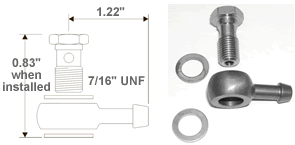Oh dear!
My Mojo failed it's SVA!
5 hour test at Southampton followed by 3 pages of failures!
Defrosting / Demisting inadequate
I had fitted a ceramic heater with an axial fan in the centre of the dash. The tester objected to the fact that it did not have suffiicient reach to the off and near side.
Will fit 2 12 volt hair driers and vents from Europa.
Seat belt fixings inadequate strength
I had specifically fitted cap head bolts to the lower seat belt mounts as they are deemed by the SVA manual to be of satisfactory strength. The tester objected demanding that I prove the bolts are 8.8 grade or better. As the bolts are imperial (7/16 UNF) their grade is not measured in metric units e.g. 8.8! After a couple of calls, the tester relented and said we would accept the cap head bolts.
Rough edges
The wiper mechanism on the bulkhead was deemed to be contactable. If any part of ones body ever made contact with the wiper mechanism, they would be in serious trouble.
Will fit a cover under the dash.
Fog lap not bright enough
I had fitted an MSA approved LED fog lamp. It is really bright. However as it is not E marked, it is subjective.
Will fit an ugly E marked lamp
Exterior sharp edges
Rear silencer. My silencer is repackable and as such has an edge where the silencer can be dismantled. Will grind the edge.
Front coilover bases. Will cover with rubber.
Rear edges of head restreaints. Will fit wing piping.
Heat shield required for exhaust manifold.
The fuel feed pipe passes over the exhaust manifold. A shield is required to provent petrol contacting the manifold in the event of a leakage.
Heat sheild required between exhaust manifold and set backs.
Wiring.
Everything needs to be covered in spiral wrap!
Brake caliper bolts insecure.
Even though new loctited bolts had been used, the tester must be able to visualise the locking mechanism. I will fit split washers.
Brake master cylinder reservoir too low.
Never heard of a U tube manometer? The reservoir was positioned so that the min fill line was just above the highest point in the hoses and about 30mm above the center line of the master cylinders. However the tester could not understand that the head of fluid "visible" to the master cylinder is actually greater than if the reservoir were actually connected to the master cylinder!
Will move the reservoir higher. A real pain as space is tight.
N/R rear brake hose too close to exhaust.
Will fit heat shield and cover the hose in heat reflective material.
Speedo
What a joke! I had at great expense installed a SPA digital speedo. I had installed the sensor and magnet on one of the driveshafts. The test rollers allow the wheels to rotate individually. The aggregate speed is measured. I have a standard open diff installed in the car. An open diff never drives each wheel the same. The results were meaningless. As the speedo is calibrated using the number of trigger points, in my case 1, and the rolling circumference of the tyre, I can get around this by having Yolohama send me proof of the rolling circumference and enter the value in the presence of the tester.
Brake reservoir hose
This is expensive stuff, over £15 a metre. Anyway, I have to get proof from the manufacture, Cohline, that the hose is suitable for brake fluid.
Rear view mirror
I had used a mirror from Halfords that attaches to the screen with a sucker. This is no good. The mirror must be permenantly attached.
Lessons learned
Don't go to an SVA station that does not do lorries! They have no intention to pass your car the first time.
Cover all wiring with spiral wrap
Your rear view mirror must be permenantly attached
Use only E marked lights or be ready to prove equivalence
Seat belt eye bolts must be stamped 8.8. Lower bolts must be either cap head or from the donor. If you use any other bolts, be prepared to prove they are 8.8 equivalent.
Fit a speedo that is calibrated in real units such as wheel rolling circumference. Bike speedos will not be accepted (I verified this).
Cover everything under the dash
If you have a full screen, make sure you have demist vents on both sides. One in the middle won't do.
If fuel pipe / hose passes over any part of the exhaust, there should be a shield to prevent fuel contacting the exhaust in the event of a leak.
Be prepared to prove suitability of any brake hose.












